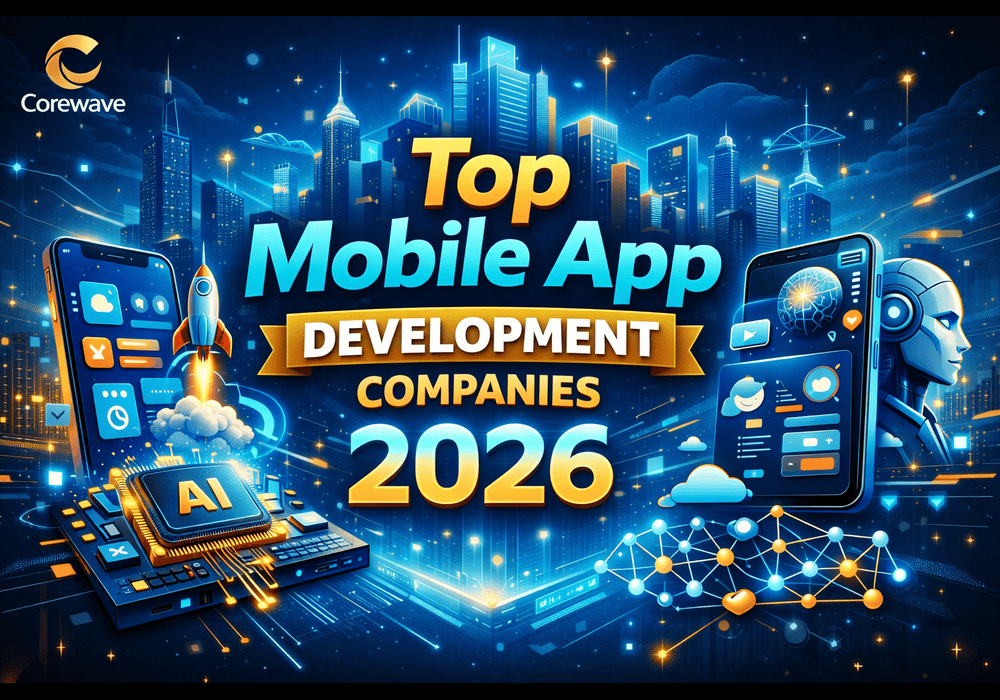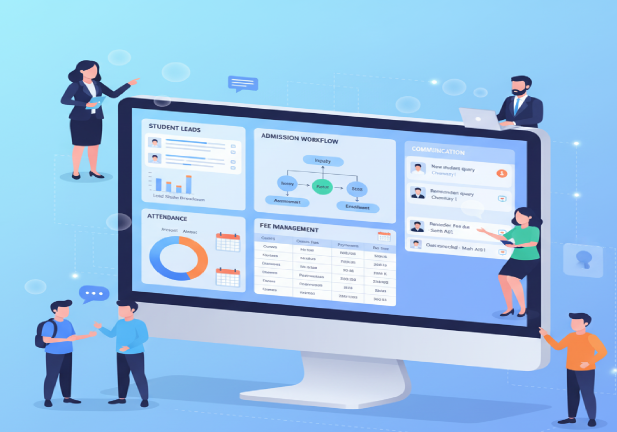The mobile app development landscape is constantly evolving. As we move closer to 2025, the rate of technological advancements is accelerating, shaping how cell apps are constructed, experienced, and incorporated into regular life. From synthetic intelligence (AI) to augmented reality (AR), there are numerous exciting improvements that builders and users alike can stay up for. In this blog post, we will explore the important mobile app improvement tendencies that are predicted to dominate the market in 2025.
1. Artificial Intelligence (AI) and Machine Learning (ML) Integration
AI and ML have already made a widespread effect on cellular applications, and by using 2025, these technologies could be even more vital to app improvement. Mobile apps will leverage AI to enhance person reports, growth personalization, and automate procedures.
Personalized User Experiences: AI algorithms will examine consumer behaviors and alternatives to supply hyper-customized content, making apps smarter and more intuitive. For instance, AI-driven hints turns into more accurate, guiding customers in making buying choices or content intake choices.
AI-Powered Chatbots: Chatbots powered through AI will become extra conversational and able to coping with complicated queries. This will enhance customer service and make interactions extra seamless.
Predictive Analytics: Mobile apps will use AI to predict destiny user movements, allowing organizations to offer extra relevant offerings. For instance, an e-commerce app should are expecting what merchandise you’re in all likelihood to buy based for your browsing behavior.
2. Augmented Reality (AR) and Virtual Reality (VR)
AR and VR are no longer simply buzzwords; they’re turning into mainstream tools in cellular app development. By 2025, the integration of AR and VR technologies may have a transformative impact on how users have interaction with cell apps.
Enhanced Shopping Experiences: AR will be used appreciably in retail and e-trade apps, permitting customers to visualise products in their real-world environment before creating a buy. For instance, clients may be able to see how furnishings seems of their domestic or try on clothes simply.
Immersive Gaming and Entertainment: VR is set to revolutionize cellular gaming and leisure. With VR headsets becoming extra low-priced and light-weight, mobile apps will offer greater immersive reviews, permitting customers to engage in digital worlds from the palm of their hand.
Virtual Tours and Education: AR and VR will play an important function in training and tourism apps. Virtual field trips, ancient website excursions, and immersive mastering reports will deliver instructional content to existence in absolutely new methods.
3. 5G and Faster Connectivity
The rollout of 5G networks worldwide is expected to reach full capacity by 2025, bringing faster speeds, lower latency, and more stable connections. This will have a profound effect on mobile app development, as developers will be able to leverage the power of 5G for more data-heavy applications.
Real-Time Data Processing: 5G will enable apps to process real-time data much faster, leading to improved performance for live-streaming apps, gaming apps, and more. For example, mobile gaming apps will offer smoother experiences with higher-quality graphics, as data transfer speeds will be lightning-fast.
Improved Cloud Computing: With 5G, apps will be able to leverage cloud resources more efficiently. This will enhance the performance of apps that require significant computing power, such as video editing apps, 3D rendering apps, and apps for machine learning.
IoT Integration: The 5G network will also help mobile apps interact with IoT (Internet of Things) devices in real-time. Expect to see better integration between smartphones and smart home devices, wearables, and other connected gadgets.
4. Foldable and Multi-Screen Devices
Foldable smartphones, including Samsung’s Galaxy Z Fold and Huaweis Mate X, have already hit the market, and by 2025, they may become more tremendous. As foldable devices come to be more common, mobile app developers will need to create apps which can be optimized for multi-display screen and flexible display screen layouts.
Adaptability to Screen Sizes: Apps will need to adapt to a huge range of display screen sizes and orientations. Developers will be conscious of growing bendy interfaces which can dynamically modify to each small and huge display sizes, improving the user experience across special devices.
New App Interfaces: With foldable displays, apps could have more screen actual property to work with. This will permit for brand new and revolutionary user interfaces, with apps making use of the greater space for multitasking or break up-display screen modes. For instance, customers might be capable of using messaging apps on one side of the foldable screen whilst watching a video on the alternative.
5. Blockchain Technology
Blockchain has already disrupted several industries, especially in finance, and its effect on mobile app improvement is set to develop in 2025. Blockchain affords a decentralized and steady approach for verifying transactions, making it an ideal technology for cell apps that require data privateness and protection.
Cryptocurrency and Wallet Apps: Blockchain will hold a large position within the development of cellular apps that assist cryptocurrency transactions. Expect more secure, efficient, and user-friendly cryptocurrency wallets and trading platforms.
Secure Transactions and Identity Management: Blockchain will decorate the security of mobile fee structures and apps that take care of touchy non-public information. By leveraging decentralized verification procedures, apps will provide more secure and obvious transactions.
Smart Contracts: Mobile apps that address contracts, along with real estate or legal apps, may want to leverage blockchain to create clever contracts which might be automatically completed when unique conditions are met, putting off the need for intermediaries.
6. No-Code/Low-Code Development
The no-code and coffee-code improvement trend is gaining momentum, and by using 2025, it will likely be a standard part of the mobile app development technique. These systems allow builders (or even non-developers) to build apps with minimal coding knowledge by means of using visual interfaces, pre-built additives, and templates.
Faster Development Cycles: With no-code and occasional-code platforms, the time and resources needed to create apps will lower notably. Businesses can launch MVPs (Minimum Viable Products) and iterate quick based on consumer feedback.
Empowering Non-Developers: No-code/low-code structures will democratize app development, allowing entrepreneurs and commercial enterprise proprietors and not using a technical enjoy to build and customize their apps.
7. App Security and Privacy Focus
As statistics privacy issues continue to grow, app safety becomes a top priority for developers. With new privacy regulations rising globally, cellular app improvement will place a robust emphasis on stable coding practices, encrypted records storage, and user consent management.
End-to-End Encryption: More apps will undertake quit-to-stop encryption to protect user information, making sure that even the app builders can not get entry to sensitive statistics.
Biometric Authentication: Biometric authentication strategies, including facial popularity and fingerprint scanning, will hold an upward thrust in popularity, supplying customers a greater secure and handy manner to log into their apps.
Compliance with Privacy Regulations: App builders will need to stay up-to-date with rules like GDPR (General Data Protection Regulation) and CCPA (California Consumer Privacy Act) to make sure that personal information is handled responsibly and securely.
8. Wearables and Health-Focused Apps
Wearable gadgets along with smartwatches and fitness trackers are more and more popular, and by 2025, their talents might be more advanced than ever. Mobile apps will integrate with those wearables to monitor and music fitness metrics extra efficiently.
Real-Time Health Monitoring: Mobile apps will paint in tandem with wearables to track real-time fitness records, such as coronary heart charge, blood strain, sleep styles, or even strain levels. These apps will provide insights and tips primarily based on this data, assisting users make knowledgeable fitness selections.
Telemedicine and Virtual Health: With the rise of telemedicine, cellular apps will preserve to play an important function in digital health consultations. Users may be capable to hook up with medical doctors, get right of entry to health advice, or even control prescriptions from their cell gadgets.
Conclusion
The Mobile app development developments in 2025 promise to be transformative, with technologies like AI, AR, 5G, and blockchain taking center level. These improvements will now not only decorate the consumer experience but additionally introduce new possibilities for groups to have interaction with their customers in innovative and significant methods. As developers, staying ahead of those traits can be essential to constructing a hit, future-evidence apps that resonate with users in an ever-evolving virtual world. Whether you’re a developer, business proprietor, or person, 2025 is shaping as much as be a thrilling 12 months for mobile app improvement.












